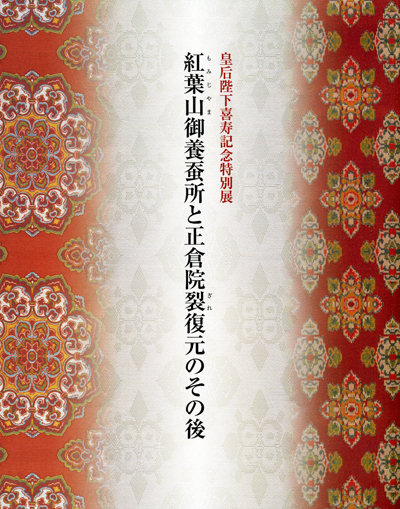| image | information |
|---|---|
 |
Sericulture is one of the traditional cultures within the Imperial Household started by Empress Dowager Shoken in 1871. Sericulture has been passed down through the Taisho (1912-1926) and Showa (1926-1989) periods, and now in the Heisei period the tradition has been upheld with great care by the current Empress. In recent years it was discovered that silk from the silkworms raised by Her Majesty, Koishimaru, a species indigenous to Japan and known to produce extremely delicate silk thread was indispensable for the restoration of ancient textiles. Silk from Koishimaru has been used for the restoration of the Shoso-in treasures and also the restoration of other valuable cultural properties, leading to increasing attention towards traditional sericulture and silk thread that has been passed down in Japan from ancient times. On the occasion of Her Majesty’s 77th birthday, the Imperial Household Agency will be exhibiting objects connected to Her Majesty’s sericulture. The Empress has raised Koishimaru silkworms with great care for over two decades and the restored textiles from the treasures of Shoso-in as well as the cover and wrapping cord of the masterpiece, Kasuga Gongen Genki-E (Legends of Kasuga Shrine), illustrated scrolls of the Kamakura period, were made from Koishimaru thread. Had it not been for the continued generous offer by the Empress of Koishimaru silk thread for 16 years, the restoration may not have been possible. In this exhibition we hope to introduce some of the cultural contributions related to Her Majesty and sericulture. The last exhibition, “Sericulture (silkworm breeding) of Her Majesty and Restoration of Shoso-in Textiles” was held seven years ago to commemorate Her Majesty’s 70th birthday. This year, two more objects from the Shoso-in Treasures, both reproductions of the completed form of the treasure, have also been added. Between Her official duties, Her Majesty attends many annual events related to sericulture, and carries out the various steps: gathering mulberry leaves and feeding the leaves to the silkworms, as part of an important task inherited from successive Empresses. She is grateful to those who support and help out in these steps and Her Majesty Herself takes much joy in continuing to carry out the tradition. She also carefully watches over the growth of Tensan (Anthperiodea yamamai) which are wild silkworms that grow on sawtooth oak leaves in outdoor enclosures. Tensan differ from the other silkworms, from their growth from eggs on young trees until their cocoons are finished. His Majesty the Emperor also shows interest in the silkworms, such as the improvement of their breeding environment, and occasionally tends to the Tensan, together with the Empress. Their Majesties are both dedicated to preserving and passing on the good and the old in the cultures and industries firmly rooted in Japanese soil from ancient times, and nurtured by the people’s wisdom and effort. Their Majesties’ wish can be seen in all of the many traditional cultures carried out by the Imperial Household. The sericulture within the Imperial Palace, started by the Empress Dowager Shoken in the beginning of the Meiji period (1868-1912), has been passed down through Empress Teimei and Empress Kojun, to Her Majesty the Empress. It has opened a new path in the Heisei period with the restoration of ancient textiles of the Nara period (AD 710 to 794). We hope that through this exhibition featuring the fruits of the Imperial sericulture and related items, our visitors will gain a better understanding of the sericulture at the Momijiyama Imperial Cocoonery and about Japanese sericulture in general. |